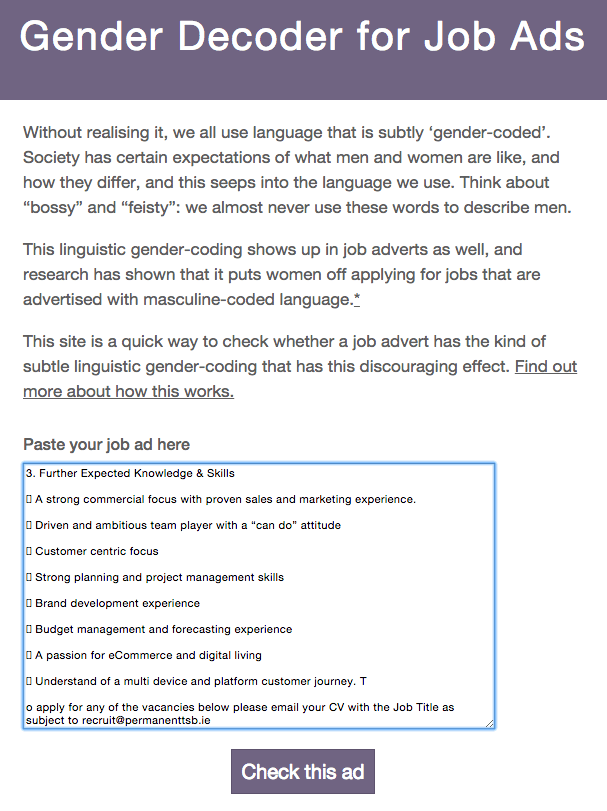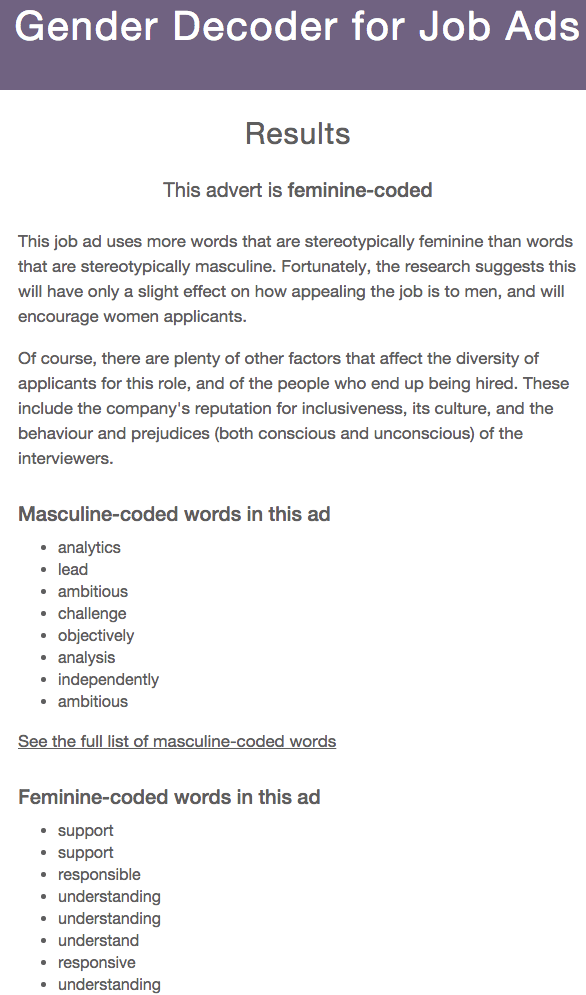The issue of diversity in recruitment and hiring practices is one of the biggest being faced by our industry in 2015 – particularly for those of us recruiting and hiring within technical industries. But why is diversity hiring so important these days? Well, there are a number of reasons. The first is the legal.
In most countries around the world, there is anti-discrimination legislation in place, which says that an organization has to give equal opportunity to all individuals, regardless of their gender, race, age, physical ability, ethnicity or religious beliefs. But while we strongly advise you to comply with any and all legal regulations in your country, you should be hiring for diversity due to the exceptional business case for it!
There are a number of great business reasons for hiring for diversity:
- Increased Profitability – Most studies surrounding diversity in the workplace have found that for every 1% increase in gender diversity, company revenue increases by 3%. While high levels of ethnic diversity increases revenue by a whopping 15%. Why? The thinking is that when you have a more diverse group representing an organization, you have more opinions, backgrounds, experience and perspectives on how to run a business, which means it can respond to a wider range of customer needs, which in turn leads to higher profitability.
- Better Candidate Attraction – According to Glassdoor, 67% of active and passive job seekers say that when evaluating companies and job offers, it is important to them that the company has a diverse workforce. In fact, it’s particularly important to minority groups – the survey found that 72% of women consider workforce diversity important (versus 62% of men), while 89% of black respondents, 80% of Asians, 70% of Latinos and 65% of military veterans, said it was important to them. What’s more, a significant majority of white respondents say workforce diversity is important.
- More Engaged Employees – More research from CEB Global and Talent Innovation, also shows that diverse and more inclusive workforces demonstrate:
- 1.57x more collaboration among teams
- 1.42x greater team commitment
- 1.19x greater intent to stay with the company
- 1.12x more discretionary effort
- 60% of employees are more likely to see their ideas developed or prototyped
- 75 % of employees are more likely to see their innovation implemented
- 70% of employees are more likely to have captured a new market in the past year
- 45% of employees are more likely to have improved market share in past year
So now that you know why it’s so important to start hiring for diversity in your organization, what can you start doing RIGHT NOW in order to improve diversity hiring within your organization? Well, here are a few suggestions.
Take an Implicit Association Test
The most important first step you can take towards improving diversity hiring in your organization is to take an Implicit Association test in order to find out where you own personal biases lay. By discovering and acknowledging your own biases, you’ll develop an awareness of them and hopefully, open yourself up to change.

Don’t worry, we all have biases. You have them, I have them, your mum has them, and your next door neighbour has them. Bias is an inclination or prejudice for or against one person or group. In other words, bias are unconscious feelings we have towards other people – unconscious feelings that play a strong part in influencing our judgement of certain people and groups, away from being balanced or even-handed, in many different areas of life. Bias is a fact of life.
The Harvard University website has a number of really interesting tests you can take in order to establish where your biases lay from gender to race to age. Take the tests, learn about yourself, acknowledge your biases, then open yourself up to change.
Standardise in Advance
The most common form of bias is Performance Bias, which tends to manifest itself in two ways – gender and race. When it comes to gender, relative to females, male performance is often overestimated. This is especially true in traditionally male-dominated industries such as technology and engineering.
For example, when 2 identical resumes were presented to recruiters – one with a man’s name, the other with a woman’s – both male and female recruiters found79% of applicants with the male name and only 49% of applicants with the female name to be “worthy of hire”. A similar result also occurred when recruiters were presented with 2 more identical resumes – one with a white sounding name, the other with a black sounding name. The resume with the white-sounding name received 50% more calls for interviews than those with black-sounding names.
In order to combat this in your organization, standardisation is key:
- Limit performance bias by setting out a standardised set of objectives to do with hiring i.e. the skills needed/desired, in advance of candidate search. Determine what skills, attributes etc. are needed and stick to them. Doing so will go a long way to ensuring that each and every one of your hiring decisions is gender and race blind e.g. the gender or race of the candidate has absolutely nothing to do with the hire, just their skills.
- When submitting shortlists to hiring managers be sure to standardise all resumes to remove any possible bias triggers. These triggers include things like candidate’s name which may signal their ethnicity or religious beliefs, the candidate’s gender, the name of university the candidate attended which may be the same as the hiring manager thus creating a bias towards them etc.
I repeat: the hiring decision should be based purely on the person’s ability to do the job, not their gender, their race or where they went to college.
Use Postive Images and Cues
Research proves that job seekers from minority groups are more likely to disengage from employers without any diversity-related cues than those with cues, thus reducing the potential for a diverse pool of talent. For example, does your job ad state that they company is an equal opportunities employer? Does it give a link back to the company’s diversity policy?
What about your website and your recruitment collateral? If you are trying to encourage more Hispanic women to join your company, why are the only images of employees on your site white males? The BBC made this mistake in their latest recruitment video:
https://www.youtube.com/watch?v=G5D5Dow3JHA
The recruitment video, which features various members of staff including presenter Evan Davis and editor Ian Katz, is meant to show what it’s like working for the BBC behind the scenes of Newsnight, and portrays staff members going about their day attending editorial meetings and the like. There’s just one problem, all the people in the recruitment video are white – a fact the Campaign for Broadcasting Equality is using to to attack the BBC’s record on diversity.
The campaign notes that the film which provides “information for young entrants into the television and media industry shows not one single BAME (Black and Minority Ethnic) person in the entire production team or visible in any role” – a huge oversight on the BBC’s part I think you’ll agree, especially when you consider that by 2017, the BBC say they aim to increase BAME portrayal on air from 10.4% to 15%.
So, do yourself and your company a favour. Put yourself in the candidate’s position. What would they like to see? How would they like to see it? Are there similar stock photography images plastered around your recruitment website? Are they in need of updating? Find out.
Assess Where You Recruit
If you aren’t finding the more diverse candidates you need to hire, it may be time to assess where you are advertising/featuring your open roles. For example, if you’re trying to encourage more African-American graduates to join your company, there’s not much point in attending career fairs at universities with a primarily white demographic. Check out university diversity ranking sites like this US one or check individual university website’s like the University College London, for their specialised breakdown of their student demographics.
Similarly, if you are trying to recruit more women and all of your job advertisements are being placed on job sites and social sites with a typically high male audience, your advert will not do it’s job. Be sure to check Alexa.com to determine the demographic usage associated with various job sites and social sites. Check out the demographics Alexa.com provided us with for Instagram.com, for example:

Test Your Job Ads
Find a digital copy of the last job ad you wrote. Highlight the text, right-click and copy it in its entirety. Now, go to a website called gender-decoder.katmatfield.com. When you’re there, right click and paste your job ad into the text box provided. The Gender Decoder will then tell you whether your job ad is feminine-coded (i.e. if your job is written with more of a leaning towards a female candidate), masculine-coded (i.e. if your job is written with more of a leaning towards a male candidate) or neutral (i.e. if your job has no leaning towards male or female candidates), based on the language you’ve used to construct it.
In this example we copied and pasted a random job ad from Indeed for an Online Channel Content and Project Executive:

According to the Gender Decoder, this ad isfeminine-coded i.e. has too many stereotypically feminine words used in its description:

Fortunately, according to the Gender Decoder, the research suggests that this will have only a slight effect on how appealing the job advertised is to men, and will encourage women applicants. However, ads that have more stereotypically masculine words will risk putting women off applying. So test your job ads and see whether or not your particular gender bias has affected how you’ve written your job ads. You might be surprised at the results!
Conclusion
It is important to note that there will NEVER be a “one size fits all” approach to an organization’s diversity hiring needs. Every organization will require a different approach. But what we can say is that if you take on board these tips it will take you a long way towards improving diversity within your organization.
By taking an implicit association test, you will be able to acknowledge your own biases which may affect your judgement in the recruitment process. By standardising various aspects of the recruitment process, you will minimise the effect of performance bias on the final hiring decision. By selecting diversity rich images for your website and ensuring your company’s diversity policy is highlighted and easy for all to find, you will attract minority groups to your business. By actively sourcing minority candidates in places they hang out, you will have a better chance of finding them. And finally, by test your own job adverts for gender bias, you can see if you need to make any improvements to tge way yo write your job ads in order to attract particular candidates in the future.
Interested in hearing more? Johnny Campbell will discuss diversity sourcing at the Spring SourceCon event in Orlando. Register now!
The tips listed above were taken from the online diversity course offered as a part of our online sourcing training.
